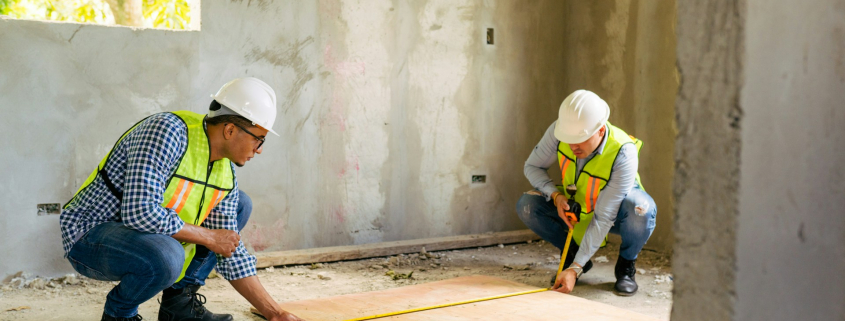Taking on an office renovation is a big step but can bring exciting changes to your workspace. Renovating offers a chance to refresh the environment and improve efficiency. A well-planned renovation can create a space that is both functional and inspiring for your team.
Starting with clear goals is key. Knowing what you want to achieve helps guide decisions and keeps the project on track. It’s also important to think about how the changes will affect daily operations. By keeping disruptions to a minimum, business can continue smoothly as improvements are made.
Selecting the right design and materials is also crucial. This ensures the space meets your needs while offering durability and sustainability. Proper choices can protect your investment in the long term. With careful planning and smart decisions, the renovation process can be a smooth journey to a better workspace.
Planning Your Office Renovation
Starting an office renovation begins with setting clear goals. Knowing what you want to achieve is essential for guiding every step of the project. Consider how you want the renovated space to function. Think about efficiency, comfort, and aesthetics. Set specific objectives like creating more meeting areas, improving lighting, or incorporating eco-friendly features. Clear goals help everyone involved understand the vision and work towards the same result.
Next, creating a realistic budget and timeline is vital. Determine how much you have to spend and allocate funds wisely. It’s important to include costs for materials, labour, permits, and unexpected expenses. A detailed budget prevents overspending and ensures resources are used effectively. Similarly, a well-thought-out timeline helps organise the renovation process. Consider the duration of each phase, from planning to execution, and set reasonable deadlines. This keeps the project on track and minimises disruptions to business operations.
Steps to plan your renovation:
– Define the renovation’s goals
– Set a detailed budget
– Create a realistic timeline
– Identify key project phases
Planning clearly and carefully makes renovation smoother and more successful.
Choosing the Right Design and Materials
Selecting the right design and materials is crucial for any office renovation. Your design should reflect the needs and personality of your workplace. Consider the company culture and how the space will be used. Will there be spaces for collaboration or quiet areas for focused work? Make sure the design supports these goals. A well-suited design not only enhances functionality but also boosts employee morale and productivity.
When it comes to materials, durability and sustainability should be top priorities. Choose materials that will withstand daily use, such as sturdy flooring and quality paint. Sustainable materials are also important. They reduce environmental impact and often result in long-term savings. Look for renewable resources or recycled options in things like furniture and fixtures. Using sustainable materials supports a healthier environment and shows a commitment to social responsibility.
Tips for choosing design and materials:
– Ensure design meets office needs
– Select durable materials
– Opt for sustainable choices
– Balance aesthetics with functionality
By focusing on these aspects, you can create a space that is both practical and pleasing, setting a solid foundation for your renovated office.
Minimising Disruption During Renovation
Office renovations can disrupt daily operations, but with smart strategies, you can keep things running smoothly. Start by planning the renovation phases around your business needs. Schedule noisy or disruptive tasks during off-peak hours or weekends. This reduces interruptions to work. Temporary workspaces can help, too. Setting up alternative areas for employees ensures they stay productive.
Clear communication is key. Keep your employees and clients informed about the renovation timeline and any changes to normal operations. Regular updates help manage everyone’s expectations. Use notices, emails, or meetings to share updates. Make sure contact details for key personnel are available in case immediate decisions are needed. Effective communication prevents confusion and keeps the team aligned towards common goals.
Strategies to minimise disruption:
– Plan around business needs
– Use temporary workspaces
– Communicate regularly with updates
– Share contact information for immediate decisions
These tactics help maintain a productive environment while ensuring the renovation progresses efficiently.
Finalising the Renovation and Moving Forward
As the renovation concludes, it’s important to ensure everything is completed to satisfaction. Conduct a thorough inspection of the renovated areas. Check that all the work aligns with your goals and meets quality standards. Make a list of any outstanding issues and address them promptly. Confirm that everything is safe and operational, from lighting systems to furniture placement.
Post-renovation maintenance is crucial for keeping your office looking new. Create a maintenance plan to address ongoing care like cleaning, minor repairs, and regular inspections. This plan prolongs the benefits of your renovation and prevents future problems. Keeping communication lines open with the renovation team can help tackle any issues that arise after completion.
Steps for successful finalisation:
– Inspect all completed works
– List and resolve outstanding issues
– Create a maintenance schedule
– Maintain open communication with the renovation team
By following these steps, you can enjoy the benefits of a fresh workspace while ensuring long-lasting satisfaction.
Conclusion
Office renovations breathe new life into your workspace, enhancing both function and style. They offer a chance to improve layout, introduce modern features, and boost morale. A successful renovation requires careful planning, from setting clear objectives to choosing the right materials. Minimising disruption during the process is crucial, allowing business to continue as usual. After the dust settles, ongoing maintenance ensures your investment is protected and continues to serve your needs.
If you’re ready to transform your office space into something extraordinary, Greg Clark Building is here to help. Our expertise in managing every aspect of office renovations ensures that your project is in reliable hands. Reach out to our building construction contractors today to discuss your vision and see how we can bring it to life with minimal disruption and maximum satisfaction.




